#Bristol fossil
Explore tagged Tumblr posts
Photo

RARE Fossil Reptile Bone - Aust Cliff UK - Westbury Formation - Upper Triassic - Genuine Specimen with COA
RARE Fossil Reptile Bone – Westbury Formation, Aust Cliff, Upper Triassic, UK
This listing is for a genuine fossilised reptile bone preserved within a natural matrix from the famous fish, reptile, and coprolite bed of Aust Cliff, Bristol, UK. This rare and historically significant site is part of the Westbury Formation within the Penarth Group, dating to the Upper Triassic period (approx. 208–201 million years ago).
Your specimen was carefully discovered by our own team members Alister and Alison on 07 April 2025, and has been professionally cleaned, prepped, and treated by Alison to ensure both preservation and presentation quality.
The Westbury Formation at Aust Cliff represents a transitional coastal lagoonal to marginal marine depositional environment. Fossils found here are often associated with the Rhaetian Stage of the Upper Triassic, making them invaluable for understanding the pre-Jurassic marine and nearshore fauna of the UK.
The bone is likely to be from a marine or semi-aquatic reptile, with known species from this bed including Ichthyosaurs, Plesiosaurs, and primitive Crocodyliforms. While exact taxonomic assignment is not possible without further scientific analysis, the morphology is consistent with vertebrate skeletal remains from these groups.
Geological Formation: Westbury Formation
Group: Penarth Group
Stage: Upper Triassic (Rhaetian)
Location: Aust Cliff, Bristol, England, UK
Depositional Environment: Shallow marine to marginal lagoonal
Notable Features: Preserved in original matrix with other fossil material potentially visible
Specimen Type: Reptile bone fossil in matrix
Each fossil we offer is 100% genuine and comes with a Certificate of Authenticity. The fossil in the photograph is the exact one you will receive.
Please refer to the photo for full sizing details — the included scale cube is 1cm for reference.
Perfect for collectors, educational use, or display, this is a striking and authentic piece of British palaeontological history.
All of our Fossils are 100% Genuine Specimens & come with a Certificate of Authenticity
#Fossil reptile bone#Aust Cliff fossil#Upper Triassic fossil#Westbury Formation#Penarth Group#Bristol fossil#coprolite bed fossil#genuine fossil#prehistoric reptile bone#UK fossil#fossil bone block#certified fossil#museum grade fossil#fossil reptiles UK
0 notes
Text
"On Monday this week [first week of December, 2023], workers in London’s financial centre were met with an unfamiliar sight – and sound. Around 100 chorists, some sporting bowler hats, had gathered at the headquarters of the City’s biggest fossil fuel-backing corporations to sing in protest.
The singers, encompassing a range of generations and vocal pitches, were part of the Climate Choir Movement, a network of choirs that officially launched in January 2023. While world leaders convened at the Cop28 climate summit in Dubai, they raised their voices in support of the Stop Ecocide campaign, which is working to criminalise the destruction of the environment.
The Climate Choir Movement’s co-founder Jo Flanagan first formed a choir in April 2022 with Extinction Rebellion to protest against HSBC’s fossil fuel investments at the bank’s AGM. Dressed smartly to blend in with shareholders, the singers rose up from their seats to disrupt the meeting with a rendition of the Abba classic "Money, Money, Money," the lyrics adapted to urge HSBC to finance renewable energy. [Note: A+ Song choice for this, tbh]
Flanagan had been inspired by a video of US activists singing as a flashmob in the middle of a conference speech to protest against greenwashing. “It made the hairs stand up on the back of my neck,” she recalls. “They walked out of the room in a very dignified way, still singing. I just thought, that’s the way I want to do it.”
Since then, the movement has grown from its first choir in Bristol to 10 choirs across the UK, with around 550 members at the time of writing. The local choirs organise their own rehearsals and protests, while all movement members can attend monthly sessions on Zoom where they learn new songs, to be performed at protests like the one in London.
For Ruth Routledge, who works as a singing for health practitioner and leads the Portsmouth choir in her spare time, taking part in this action was a “wonderful, uplifting” experience. “Singing and harmonising together is a very beautiful way to protest,” she says. “There’s something very gentle, very moving, and very powerful about it. It’s so vulnerable. There’s just a real naked, stripped back humanity that I think cuts through a lot of noise.”
The movement welcomes all new members, regardless of singing ability. Routledge was touched when some passersby – including “a couple of lads” – joined in with the songs.
She is eager for others to experience the sense of hope that singing together brings. “I feel very passionately about the state of the environment. I’m very concerned about my children’s futures, and I’m concerned about the whole world. It keeps me awake at night.
“Joining together means we’re not isolated, worrying that the world is on fire and no one’s going to do anything.”
For Flanagan, what sets the movement apart from other choirs that sing songs about nature is its targeted approach. “We organise very carefully choreographed, peaceful performance protests. We want to change hearts and minds.”
Seeing onlookers in tears illustrates to her what singing can achieve. “It reaches deep inside people in a way that other forms of protest can’t.”"
-via Positive.News, December 6, 2023
#climate news#climate protest#climate hope#hopepunk#singing#abba#bristol#london#uk#big bank billionaires#fossil fuels#climate change#climate crisis#direct action#protest#activism#climate activism#climate choir#ecocide#choir#choir stuff#protest songs#protest music#protest art#good news#hope
183 notes
·
View notes
Text









Part 2 - still reliving Beach Fossils the other week. Here's some more pics & vid of Daydream ❤️
Beach Fossils - Fleece, Bristol 15th Feb 2024
#beach fossils#the beach fossils#gigs#band photography#bristol#bands#indie music#music#gig photography#indie pop#live gigs#dream pop#concert photography#concert photographer#band photographer#guitar pop
0 notes
Text
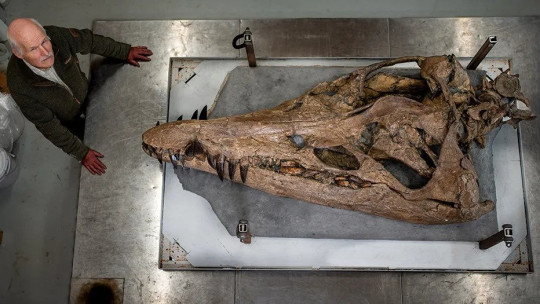
Gigantic Skull of Prehistoric Sea Monster Found on England’s ‘Jurassic Coast’
The remarkably well-preserved skull of a gigantic pliosaur, a prehistoric sea monster, has been discovered on a beach in the county of Dorset in southern England, and it could reveal secrets about these awe-inspiring creatures.
Pliosaurs dominated the oceans at a time when dinosaurs roamed the land. The unearthed fossil is about 150 million years old, almost 3 million years younger than any other pliosaur find. Researchers are analyzing the specimen to determine whether it could even be a species new to science.
Originally spotted in spring 2022, the fossil, along with its complicated excavation and ongoing scientific investigation, are now detailed in the upcoming BBC documentary “Attenborough and the Jurassic Sea Monster,” presented by legendary naturalist Sir David Attenborough, that will air February 14 on PBS.

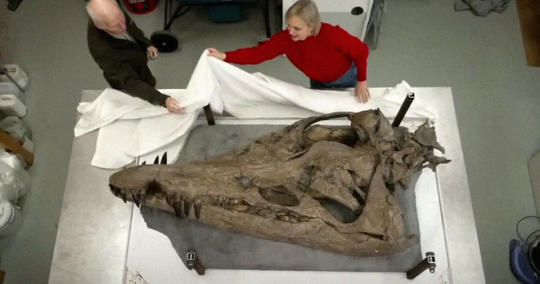
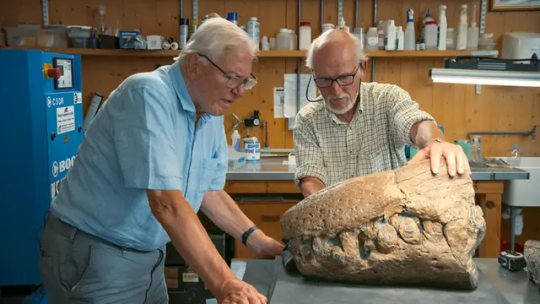
Such was the enormous size of the carnivorous marine reptile that the skull, excavated from a cliff along Dorset’s “Jurassic Coast,” is almost 2 meters (6.6 feet) long. In its fossilized form, the specimen weighs over half a metric ton. Pliosaurs species could grow to 15 meters (50 feet) in length, according to Encyclopaedia Britannica.
The fossil was buried deep in the cliff, about 11 meters (36 feet) above the ground and 15 meters (49 feet) down the cliff, local paleontologist Steve Etches, who helped uncover it, said in a video call.
Extracting it proved a perilous task, one fraught with danger as a crew raced against the clock during a window of good weather before summer storms closed in and the cliff eroded, possibly taking the rare and significant fossil with it.
Etches first learned of the fossil’s existence when his friend Philip Jacobs called him after coming across the pliosaur’s snout on the beach. Right from the start, they were “quite excited, because its jaws closed together which indicates (the fossil) is complete,” Etches said.
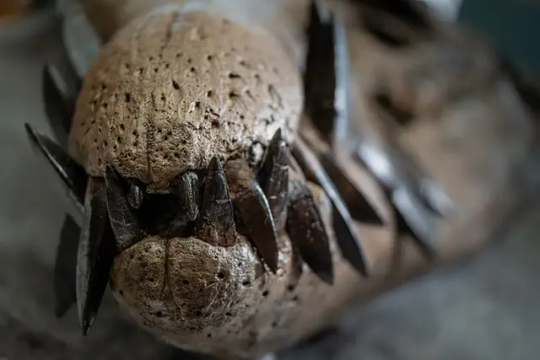
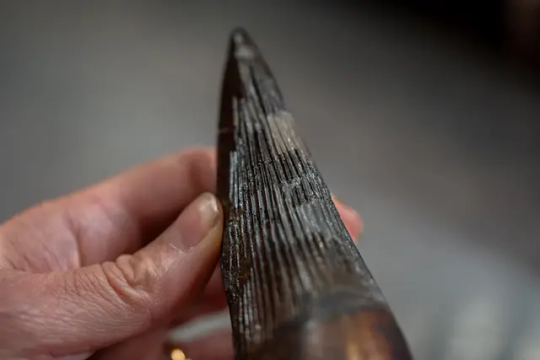
After using drones to map the cliff and identify the rest of the pliosaur’s precise position, Etches and his team embarked on a three-week operation, chiseling into the cliff while suspended in midair.
“It’s a miracle we got it out,” he said, “because we had one last day to get this thing out, which we did at 9:30 p.m.”
Etches took on the task of painstakingly restoring the skull. There was a time he found “very disillusioning” as the mud, and bone, had cracked, but “over the following days and weeks, it was a case of …, like a jigsaw, putting it all back. It took a long time but every bit of bone we got back in.”
It’s a “freak of nature” that this fossil remains in such good condition, Etches added. “It died in the right environment, there was a lot of sedimentation … so when it died and went down to the seafloor, it got buried quite quickly.”
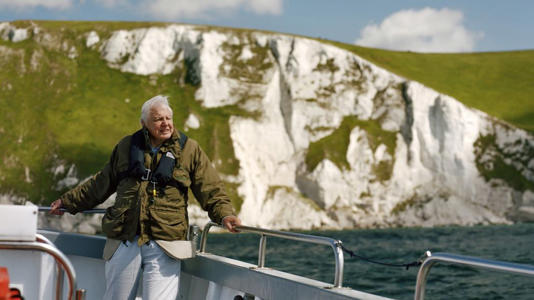
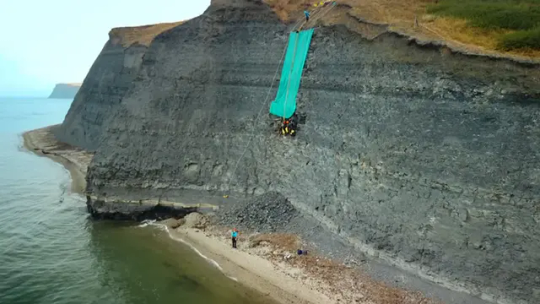
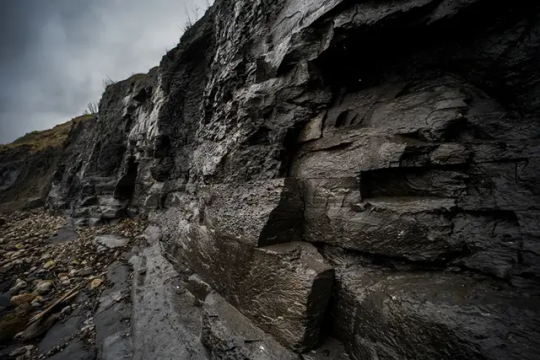
Fearsome top predator of the seas
The nearly intact fossil illuminates the characteristics that made the pliosaur a truly fearsome predator, hunting prey such as the dolphinlike ichthyosaur. The apex predator with huge razor-sharp teeth used a variety of senses, including sensory pits still visible on its skull that may have allowed it to detect changes in water pressure, according to the documentary.
The pliosaur had a bite twice as powerful as a saltwater crocodile, which has the world’s most powerful jaws today, according to Emily Rayfield, a professor of paleobiology at the University of Bristol in the United Kingdom who appeared in the documentary. The prehistoric marine predator would have been able to cut into a car, she said.
Andre Rowe, a postdoctoral research associate of paleobiology at the University of Bristol, added that “the animal would have been so massive that I think it would have been able to prey effectively on anything that was unfortunate enough to be in its space.”
By Issy Ronald.
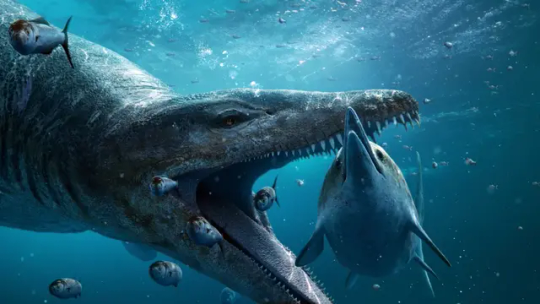
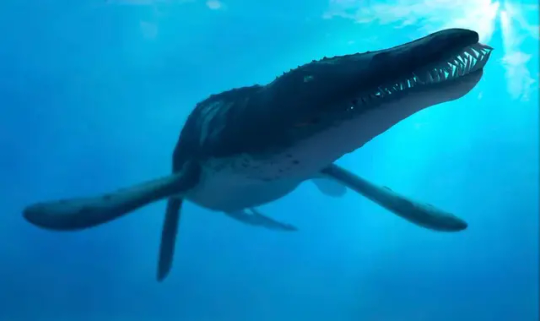
#Gigantic Skull of Prehistoric Sea Monster Found on England’s ‘Jurassic Coast’#Dorset England#pliosaur#jurassic#fossil#prehistoric#dinosaur#paleobiology#palaeontologists#archaeology#archeolgst#history#history news#ancient history#Sir David Attenborough#nature#naturalist
2K notes
·
View notes
Text
Climate whiplash is already hitting major cities around the world, bringing deadly swings between extreme wet and dry weather as the climate crisis intensifies, a report has revealed.
Dozens more cities, including Lucknow, Madrid and Riyadh have suffered a climate “flip” in the last 20 years, switching from dry to wet extremes, or vice versa. The report analysed the 100 most populous cities, plus 12 selected ones, and found that 95% of them showed a distinct trend towards wetter or drier weather.
The changing climate of cities can hit citizens with worsened floods and droughts, destroy access to clean water, sanitation and food, displace communities and spread disease. Cities where the water infrastructure is already poor, such as Karachi and Khartoum, suffer the most.
Cities across the world are affected but the data shows some regional trends, with drying hitting Europe, the already-parched Arabian peninsula and much of the US, while cities in south and south-east Asia are experiencing bigger downpours.
The analysis illustrates the climate chaos being brought to urban areas by human-caused global heating. Too little or too much water is the cause of 90% of climate disasters. More than 4.4 billion people live in cities and the climate crisis was already known to be supercharging individual extreme weather disasters across the planet.
Rising temperatures, driven by fossil fuel pollution, can exacerbate both floods and droughts because warmer air can take up more water vapour. This means the air can suck more water from the ground during hot, dry periods but also release more intense downpours when the rains come.
“Our study shows that climate change is dramatically different around the world,” said Prof Katerina Michaelides, at the University of Bristol, UK. Her co-author, Prof Michael Singer at Cardiff University, described the pattern as “global weirding”.
“Most places we looked at are changing in some way, but in ways that are not always predictable,” Singer said. “And given that we’re looking at the world’s largest cities, there are really significant numbers of people involved.”
Coping with climate whiplash and flips in cities is extremely hard, said Michaelides. Many cities already face water supply, sewage and flood protection problems as their populations rapidly swell. But global heating supercharges this, with the often ageing infrastructure in rich nations designed for a climate that no longer exists, and more climate extremes making the establishment of much-needed infrastructure even harder in low income nations.
The researchers have worked in Nairobi, Kenya, one of the cities suffering climate whiplash. “People were struggling with no water, failed crops, dead livestock, with drought really impacting their livelihoods and lives for multiple years,” Michaelides said. “Then the next thing that happens is too much rain, and everything’s flooded, they lose more livestock, the city infrastructure gets overwhelmed, water gets contaminated, and then people get sick.”
Sol Oyuela, executive director at NGO WaterAid, which commissioned the analysis, said: “The threat of a global ‘day zero’ looms large – what happens when the 4 billion people already facing water scarcity reach that breaking point, and the food, health, energy, nature, economies, and security that depend on water are pushed to the brink?”
36 notes
·
View notes
Text

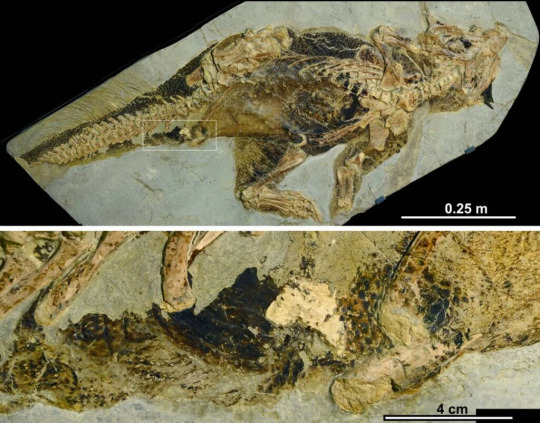
There are some similarities to the crocodile cloaca, co-author Diane Kelly—an expert in the evolution of copulatory systems—told the New York Times, and the study suggests that, like the crocodile, this dinosaur cloaca may have housed glands responsible for spewing out mate-attracting scents.

Jakob Vinther, a paleontologist at the University of Bristol, realized that this Psittacosaurus's private parts were unusually well-preserved. A close-up of the Psittacosaurus cloaca, along with a reconstruction.
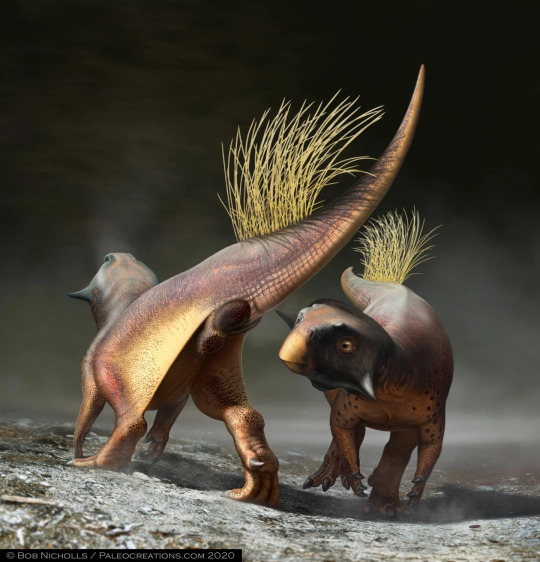
A rendering of Psittacosaurus, showing how the cloaca might have been used during courtship. "Psittacosaurus was surprisingly cute for a dinosaur, Vinther says, perhaps there was a glorious past where dinosaurs were strutting around and showing their cloacas off.” One can only hope.
250 notes
·
View notes
Text
CNN 5/20/2025
The world’s ice sheets just got a dire prognosis, and coastlines are going to pay the price
By Laura Paddison, CNN
Updated: 10:52 AM EDT, Tue May 20, 2025
Source: CNN
The world’s ice sheets are on course for runaway melting, leading to multiple feet of sea level rise and “catastrophic” migration away from coastlines, even if the world pulls off the miraculous and keeps global warming to within 1.5 degrees Celsius, according to new research.
A group of international scientists set out to establish what a “safe limit” of warming would be for the survival of the Greenland and Antarctic ice sheets. They pored over studies that took data from satellites, climate models and evidence from the past, from things like ice cores, deep-sea sediments and even octopus DNA.
What they found painteda dire picture.
The world has pledged to restrict global warming to 1.5 degrees Celsius above pre-industrial levels to stave off the most catastrophic impacts of climate change.
However, not only is this limit speeding out of reach — the world is currently on track for up to 2.9 degrees of warming by 2100. But the most alarming finding of the study, published Tuesday in the journal Communications Earth and Environment, is that 1.5 might not even be good enough to save the ice sheets.
Even if the world sustains today’s level of warming, at 1.2 degrees, it could still trigger rapid ice sheet retreat and catastrophic sea level rise, the scientists found.
The Greenland and Antarctic ice sheets together hold enough fresh water to raise global sea levels by around 213 feet— an unlikely scenario but one that must be acknowledged to fully understand the risk.
Since the 1990s, the amount of ice they’ve lost has quadrupled; they are currently losing around 370 billion tons a year. Ice sheet melting is the dominant contributor to rising seas and the rate of annual sea level rise has doubled over the past 30 years.
It’s set to get worse.
Multiple studies suggest 1.5 degrees of warming is “far too high” to prevent rapid ice sheet retreat that would be irreversible on human timescales, and the world should prepare for many feet of sea level rise over the coming centuries, according to the study.
“You don’t slow sea level rise at 1.5, in fact, you see quite a rapid acceleration,” said Chris Stokes, a study author and glaciologist at Durham University.
It’s an existential threat to the world’s coastal populations. Around 230 million people live less than 1 meter (3.2 feet) above sea level. Even small changes in the amount of ice held in the ice sheets will “profoundly alter” global coastlines, displacing hundreds of millions of people and causing damage that stretches the limits of adaptation, the study found.
Seas could surge by 0.4 inches a year by the end of the century, within the lifetimes of young people now, the scientists found.
At this level, which equates to 40 inches a century, “you’re going to see massive land migration on scales that we’ve never witnessed since modern civilization,” said Jonathan Bamber, a study author and glaciologist at the University of Bristol.
There are still huge uncertainties about where tipping points lie. The way climate change unfolds is not linear and it’s unclear exactly when warming might trigger rapid retreat and even collapse.
What’s hugely concerning, the study authors say, is that the best estimates of “safe” temperature thresholds for saving the ice sheets keep going down as scientists better understand their vulnerability to climate change.
Early modeling suggested temperatures would need to hit around 3 degrees of warming to destabilize the Greenland ice sheet, for example, but recent estimates suggest it would only take around 1.5 degrees.
To avoid the rapid collapse of one of more ice sheets means limiting global warming to closer to 1 degree above pre-industrial levels, the study authors concluded.
This would require drastic cuts to the amount of fossil fuels humans burn, something which looks exceptionally unlikely as countries including the US continue to embrace oil, coal and gas.
The world is already starting to see some of the worst-case scenarios play out in terms of ice loss, Stokes said.
“There’s very little that we’re observing that gives us hope here,” he said. “The absolute best-case scenario is that sea level rise is slow and steady,” he added.
The findings don’t mean the world should give up on climate targets, as every fraction of a degree of warming translates to worse impacts, Stokes said.
“Limiting warming to 1.5 will be a major achievement. It should absolutely be our target, but in no sense will it slow or stop sea level rise and melting ice sheets.”
See Full Web Article
Go to the full CNN experience
© 2025 Cable News Network. A Warner Bros. Discovery Company. All Rights Reserved.
Terms of Use | Privacy Policy | Ad Choices | Do Not Sell or Share My Personal Information
8 notes
·
View notes
Text
Australia is worldleading in its arrests on climate change protests. Greater than 20% of all our environmental protests involve arrests (average 6.3%). Of 14 countries including the US, UK, Brazil and Russia(1).
Study referenced below its worth a read.
These numbers are a concerning trend that needs to be addressed. Our government has become increasingly content to use police action as a means of silencing climate activists who are concerned with the rampant influence of fossil fuel industries on our politicians.
We are being restricted our rights to voice fears based in SCIENTIFIC FACT. And that absolutely terrifies me.
References:
1. Berglund, O., Franco Brotto, T., Pantazis, C., Rossdale, C. and Pessoa Cavalcanti, R. (2024) Criminalisation and Repression of Climate and Environmental Protest, University of Bristol: Bristol
10 notes
·
View notes
Text
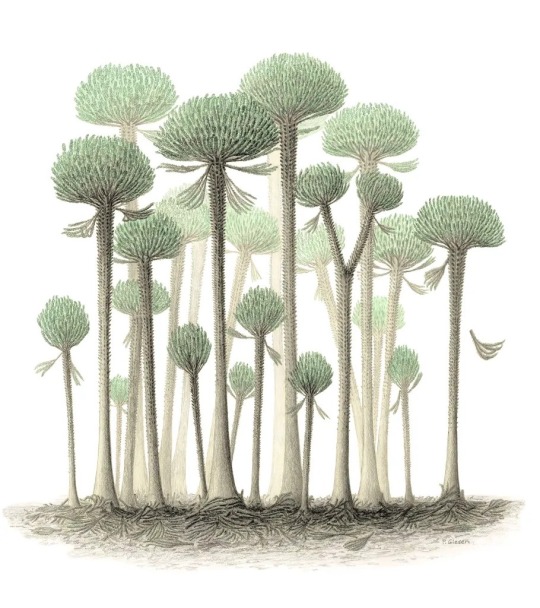
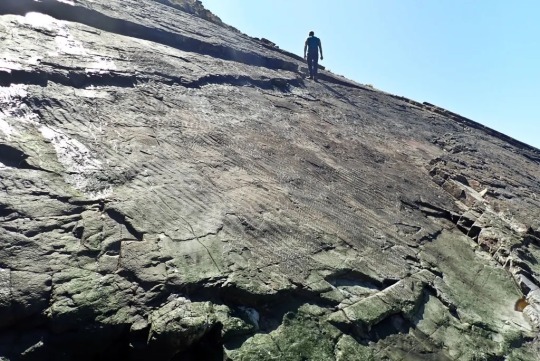
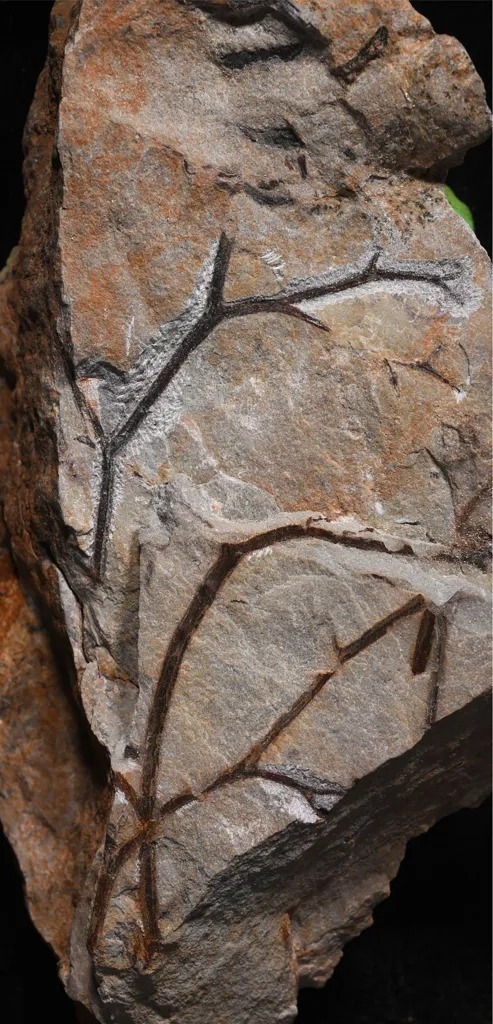


🇬🇧
Scientists in southwest England have recently unveiled the discovery of the oldest fossilized forest known on Earth, dating back an astonishing 390 million years. This finding, detailed in a new study released by the University of Cambridge, surpasses the previous record held by a forest in the state of New York by 4 million years.
The fossils were found on high sandstone cliffs on the south side of the Bristol Channel, near Minehead, close to a holiday park. The trees, identified as Calamophyton, bore resemblance to palms, although their trunks were thin and hollow, devoid of leaves but with branch-like structures covering their branches. These trees ranged in height from 2 to 4 meters, losing branches as they grew.
The forest dates back to the Devonian Period, a critical time between 419 and 358 million years ago when life began to venture onto land. The trees played a vital role, trapping sediments in their root systems and stabilizing riverbanks and coastlines.
The study also highlights the rapid evolution of primitive forests. While the English forest is less diverse, consisting of only one tree type compared to New York's oldest forest, which housed a variety of species, it demonstrates how flora changed quickly in geological terms.
Additionally, these trees provided habitats for ground-dwelling invertebrates, leaving evidence of tracks and tail drags from primitive arthropods. Although the exact identity of these arthropods is unknown, their tracks and drags indicate the presence of sizable invertebrates, some reaching widths of 5 to 10 centimeters.
Scientists also noted that at the time, the cliffs where the fossils were found were connected to parts of what is now Germany and Belgium, rather than England. The study was published in the Journal of the Geological Society.
The discovery was described as "fortuitous" as the team was in the area investigating general geology and stumbled upon the fossils during a casual lunch in a field. This revelation not only emphasizes the importance of forests in stabilizing ancient ecosystems but also underscores the luck involved in such scientific discoveries.
🇧🇷
Cientistas no sudoeste da Inglaterra recentemente revelaram a descoberta da floresta fossilizada mais antiga conhecida na Terra, datada de impressionantes 390 milhões de anos atrás. Esta descoberta, detalhada em um novo estudo divulgado pela Universidade de Cambridge, supera o recorde anterior mantido por uma floresta no estado de Nova York em 4 milhões de anos.
Os fósseis foram encontrados em altos penhascos de arenito no lado sul do Canal de Bristol, próximo a Minehead, perto de um parque de férias. As árvores, identificadas como Calamophyton, apresentavam semelhanças com palmeiras, embora seus troncos fossem finos e ocos, desprovidos de folhas, mas com estruturas semelhantes a galhos cobrindo seus ramos. Estas árvores tinham uma altura variando de 2 a 4 metros, perdendo ramos à medida que cresciam.
A floresta remonta ao Período Devoniano, uma época crucial entre 419 e 358 milhões de anos atrás, quando a vida começava a se aventurar na terra. As árvores desempenhavam um papel vital, aprisionando sedimentos em seus sistemas radiculares e estabilizando margens de rios e litorais.
O estudo também destaca a rápida evolução das florestas primitivas. Embora a floresta inglesa seja menos diversificada, composta por apenas um tipo de árvore, em comparação com a floresta mais antiga de Nova York, que abrigava uma variedade de espécies, mostra como a flora mudou rapidamente em termos geológicos.
Além disso, essas árvores forneceram habitats para invertebrados do chão da floresta, deixando evidências de pegadas e arrastos de cauda de artrópodes primitivos. Embora a identidade exata desses artrópodes seja desconhecida, suas pegadas e arrastos indicam a presença de invertebrados consideráveis, com alguns atingindo larguras de 5 a 10 centímetros.
Os cientistas também observaram que, na época, os penhascos onde os fósseis foram encontrados estavam conectados a partes do que hoje é a Alemanha e a Bélgica, em vez da Inglaterra. O estudo foi publicado no Journal of the Geological Society.
A descoberta foi descrita como "fortuita", pois a equipe estava na área para investigar a geologia em geral e, durante um almoço casual em um campo, depararam-se com os fósseis. Esta revelação não apenas destaca a importância das florestas na estabilização de ecossistemas antigos, mas também ressalta a sorte envolvida em tais descobertas científicas.
#science#paleontology#geology#paleobotany#universe#biology#earth#digital painting#artwork#space#forest#ancient history#ancient forest#paleozóico#paleobotânica#paleozoic#paleontologia#paleoart#painting#palaeoart#palaeontology#paleostream#paleomedia#devonian
24 notes
·
View notes
Text
Scientists at the University of Bristol have discovered that mycelium composites, biobased materials made from fungi and agricultural residues, can have a greater environmental impact than conventional fossil-fuel-based materials due to the high amount of electricity involved in their production. In the findings, published in Scientific Reports, the team show that this is further exacerbated in countries like South Africa where fossil fuel is the main source of electricity. This isn't helped by mycelium composites' shorter lifespan and the need for multiple replacements over the duration of long-term applications, thereby increasing their overall environmental impact. Despite this discovery, they also concluded that the overall potential damage on the environment caused by this technology can be mitigated by incorporating alternative energy sources like firewood.
Read more.
#Materials Science#Science#Biomaterials#Fungi#Mycelium#Composites#Environment#Materials processing#University of Bristol
10 notes
·
View notes
Text

Running Thecodontosaurus antiquus, a basal sauropodomorph from the Late Triassic (Rhaetian) of Southern England. This reptile was described in 1836 from finds from a quarry in present-day Bristol. Then it was classified as squamate, and the name ("lizard with teeth in sockets" in translation) emphasized the differences in the fastening of teeth). It was only in 1870 that Thomas Huxley attributed Thecodontosaurus to dinosaurs (now it is obvious that all dinosaurs had thecodont teeth attachment). Later, many bones were found in the "fissure fillings", some of which were destroyed during the bombing of Bristol. Today, about 245 fragmentary fossils are known, from which it is possible to make up almost an entire skeleton. In 1891, the supposedly Australian material of Thecodontosaurus was separated into the genus Agrosaurus, but it turned out that it was incorrectly labeled. One juvenile specimen was describes as the genus Pantydraco in 2007. Thecodontosaurus was a small long-tailed dinosaur, the largest specimens were 2.5 m in length (and the average length was only 1.2 m). Michael Benton noted in 2000 that there was a robust morph among Thecodontosaurus. This may indicate sexual dimorphism.
Here I tried to convey the scaly integument with vertical hatching. Let's see how this method will manifest itself in future works. :) The filaments are speculative.
Black ballpoint pen and black colored pencil, 2023.
#thecodontosaurus antiquus#thecodontosaurus#pantydraco#basal sauropodomorph#triassic dinosaurs#late triassic#paleoart
13 notes
·
View notes
Photo

Rare Agkistracanthus mitgelensis Fossil Fish Tooth in Matrix – Upper Triassic, Aust Cliff UK – Genuine Specimen
This is a rare Agkistracanthus mitgelensis fossil fish tooth preserved in matrix, collected from the famous fish, reptile, and coprolite bed at Aust Cliff, Bristol, England. This remarkable specimen comes from the Westbury Formation, part of the Penarth Group, dating to the Upper Triassic period (~209–201 million years ago).
Discovered on 07 April 2025 by our own team members Alister and Alison, the specimen has been carefully cleaned, prepped, and treated by Alison to ensure optimal preservation and presentation. The accompanying photo shows the exact specimen you will receive. A scale cube = 1cm is included for full sizing (see photo).
The Agkistracanthus mitgelensis is a rare genus of cartilaginous fish (likely related to the Holocephali or early Chimaeras), known primarily from teeth and occasional skeletal remains. The teeth are distinctive for their elongate, pointed shape and smooth enamel. Finds of this genus are important for understanding fish evolution across the Triassic–Jurassic boundary.
Geological Details:
Formation: Westbury Formation
Group: Penarth Group
Locality: Aust Cliff, Bristol, UK
Age: Upper Triassic (Rhaetian Stage)
Depositional Environment: Shallow marine to lagoonal conditions rich in vertebrate remains and coprolites
Taxonomy:
Genus: Agkistracanthus
Species: mitgelensis
Family: Uncertain (tentatively placed among basal Holocephali)
Order: Chimaeriformes (provisional)
Notable:
From the iconic Aust Cliff horizon, internationally known for its vertebrate fossils.
Rare taxon, seldom available on the open market.
Highly sought after by collectors and ideal for educational display.
All of our Fossils are 100% Genuine Specimens & come with a Certificate of Authenticity.
This is a scientifically significant and visually appealing piece from a historic British fossil locality. A fantastic opportunity to acquire a genuine piece of prehistoric life with both collector and academic value.
#Agkistracanthus mitgelensis#fossil fish tooth#Aust Cliff fossil#Upper Triassic#Westbury Formation#Penarth Group#Bristol fossil#coprolite bed#prehistoric fish tooth#genuine fossil specimen#rare fossil#Triassic fish#fish reptile coprolite bed#vertebrate fossil#UK fossil#authentic fossil gift
0 notes
Text
Secrets of England: Unveiling Hidden Treasures beyond the Crowds
There are untold astounding places to explore in England, including enormous national parks, stunning beaches, cultural cities, & majestic castles. Residents of England are constantly on the lookout for novel places to see as staycations grow in fame. We would want to show you a new England. Here is our analysis of the off-the beaten England sightseeing places.
Off-the-Beat Attractions in England
Here are some must-see England tourist attractions that are off-the-beaten.
The Jurassic Coast

This is a UNESCO World Heritage Site that is home to spectacular coastal scenery, fossils, and unusual geological formations. It is situated on the southern coast of England.
Lundy Island
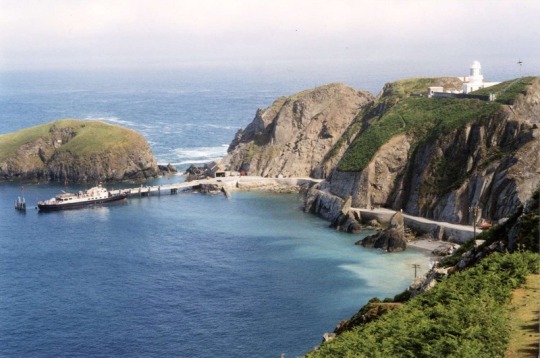
Image credit- johngrimes.co.uk
A shelter for wildlife, such as puffins and seals, Lundy Island is located in the Bristol Channel. It is a tranquil getaway that is far away.
Avebury

Frequently overshadowed via Stonehenge, Avebury has a larger and no less enigmatic stone circle. Even walking amid the stones is possible.
The Lost Gardens of Heligan
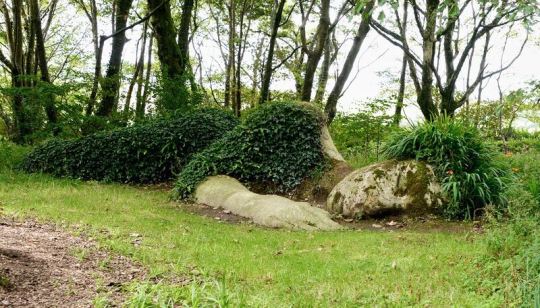
These gardens, which are in Cornwall, were long forgotten about before being found and brought back to their former splendor.
Stourhead
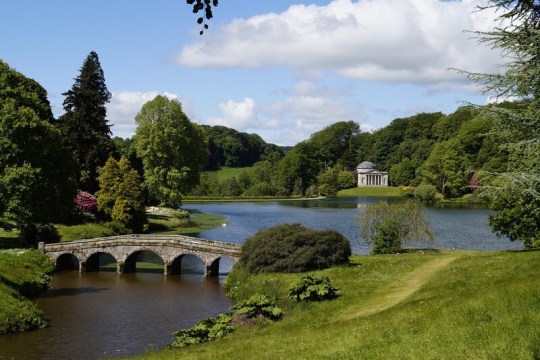
With its traditional temples, bridges, and grottoes, this Wiltshire manicured park from the 18th century is a beautiful site to explore.
Durham Cathedral
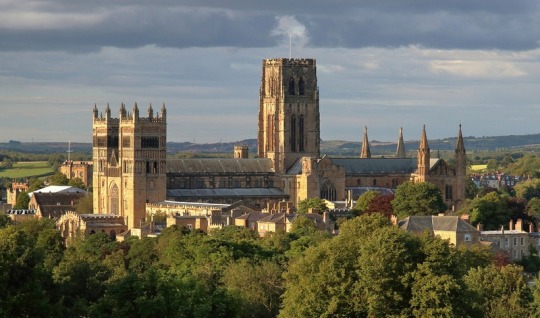
The UNESCO World Heritage Site Durham Cathedral and the ancient Durham Castle are located in this northeastern English city.
The Norman Gate

Many people frequently overlook the Norman Gate, in Windsor Castle which is located at Lower Ward entrance. It is an amazing piece of architecture & was built into the castle's original medieval framework.
Rievaulx Abbey

This Cistercian abbey is a gorgeous and tranquil location tucked away in North York Moors.
The Seven Sisters

Such impressive white chalk cliffs in Sussex offer wonderful hiking opportunities and expansive vistas of the English Channel.
The Cotswolds
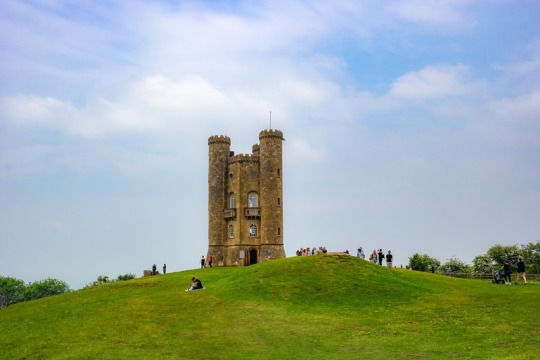
Although not completely off the beaten track, smaller towns like Bibury & Castle Combe provide a more tranquil and conventional English rural experience.
Museum of Bath

Housed in a historic structure, this museum provides an overview of Bath's architectural heritage and is frequently less crowded than the city's top tourist destinations. There are several interesting things to do near bath for instance Oxford.
Aysgarth Falls Yorkshire

This group of waterfalls in Yorkshire Dales is a tranquil and lovely place to hike.
Dungeness
A shingle beach, vintage fishing boats, & an abandoned nuclear power plant are some of the peculiar and unsettling elements of this Kent coast location.
The Tamar Valley
With its trees, meadows, and Tamar River, this region on the boundary between Devon & Cornwall is a hidden jewel of natural beauty.
The York Art Gallery is home to a remarkable collection of artworks, including pieces by well-known painters like Lowry & Hockney, despite not being as well-known as some other art institutions in the UK. This is amid the best things to do in York.
Why England’s Off-the-Beat Path Attractions so Popular?
For a variety of interesting sounding reasons, off-the-beaten-path tourism in England has grown in popularity as tourists look for authentic and one-of-a-kind experiences. Here are some strong arguments for why these hidden best places to visit in England so alluring.
Hidden treasures and lesser-known locations in England provide a change from the typical tourist crowds. Exploring these uncharted territories can be an exciting journey. Visitors can fully immerse themselves in the customs, traditions, & way of life of the area by venturing off the beaten path. These less-traveled areas offer genuine encounters that let visitors see England as it really is, unfiltered by tourism.
Destinations that are off the usual route can have breathtaking natural beauty, from tranquil farmland views to rocky coasts. England is rife with history, and undiscovered places can include historical gems that may not be as well-known or popular.
These isolated spots give a respite from the bustle of more popular tourist destinations and offer a sense of peace & tranquility that is difficult to obtain elsewhere. A sense of excitement and discovery are sparked by exploring off-the-beaten-path locations, making the journey itself an unforgettable aspect of the vacation experience.
Wrapping Up As you find areas that not everyone gets the chance to view, discovering secret famous places in England and following the path less taken can give you a sense of success.
3 notes
·
View notes
Text
youtube
The University of Bristol proved they could artificially fossilize bones in ONE DAY.
3 notes
·
View notes
Text
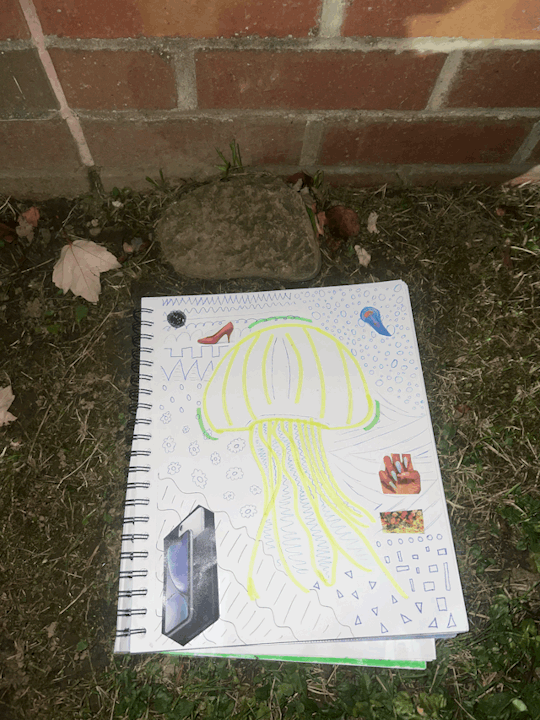
Jellyfish
They have no brain, heart, bones, or eyes! (National Geographic's Kids)
2. Because they have no bones, their fossils are hard to come-by. With that being said they are believed to be older than dinosaurs. (Treehugger)
3. They are made up of 98% water! (One Earth)
4. 150 million people are stung by jellyfish each year! (Bristol Aquarium)
5. The main shape of jellyfish are called the Medusa, after the mythical creature! (Farmers' Almanac)
5 Facts- Consumerist/Technology
High Heels- The first high heels were actually boots worn by men in the 10th century. (Google Arts and Culture)
2. Diamond- Some are older than dinosaurs and some even older than the stars. (Forevermore)
3. Flowers- Roses are the #1 most sold cut flower. (The Spruce)
4. Phone- The first call from a mobile phone was made on April 3rd, 1973. (NPR)
5. Acrylic Nails- Created accidentally in the 1950s after a dentist broke off his nail and used chemicals and dental acrylics to fashion a new one. (Cohen Cramer)
Attendance Prompt:
"Although it has long been prized as a color for the prestigious and powerful, it has, from the beginning, always been a victim of unintended meanings" (page 138).
It goes onto discuss different meanings behind the color Scarlet which I found interesting since so often it is just grouped with red and not even thought of as its own individual color. It even go as far back to discuss the history behind this color in Roman military uniforms. But this section starts off with a rather gruesome interpretation of the color. I just find it rather interesting how different meanings of the same shade can be.
(This is the only rock I could find near the townhouses!)
2 notes
·
View notes
Text
[Merlyn] was dressed in a flowing gown with fur tippets which had the signs of the zodiac embroidered over it, with various cabalistic signs, such as triangles with eyes in them, queer crosses, leaves of trees, bones of birds and animals, and a planetarium whose stars shone like bits of looking-glass with the sun on them.
....
There was a real corkindrill hanging from the rafters, very life-like and horrible with glass eyes and scaly tail stretched out behind it. When its master came into the room it winked one eye in salutation, although it was stuffed. There were thousands of brown books in leather bindings, some chained to the book-shelves and others propped against each other as if they had had too much to drink and did not really trust themselves. These gave out a smell of must and solid brownness which was most secure.
Then there were stuffed birds, popinjays, and maggot-pies and kingfishers, and peacocks with all their feathers but two, and tiny birds like beetles, and a reputed phoenix which smelt of incense and cinnamon. It could not have been a real phoenix, because there is only one of these at a time. Over by the mantelpiece there was a fox's mask, with GRAFTON, BUCKINGHAM TO DAVENTRY, 2 HRS 20 MINS written under it, and also a forty-pound salmon with AWE, 43 MIN., BULLDOG written under it, and a very life-like basilisk with CROWHURST OTTER HOUNDS in Roman print.
There were several boars' tusks and the claws of tigers and libbards mounted in symmetrical patterns, and a big head of Ovis Poli, six live grass snakes in a kind of aquarium, some nests of the solitary wasp nicely set up in a glass cylinder, an ordinary beehive whose inhabitants went in and out of the window unmolested, two young hedgehogs in cotton wool, a pair of badgers which immediately began to cry Yik-Yik-Yik-Yik in loud voices as soon as the magician appeared, twenty boxes which contained stick caterpillars and sixths of the puss-moth, and even an oleander that was worth sixpence—all feeding on the appropriate leaves—a guncase with all sorts of weapons which would not be invented for half a thousand years, a rod-box ditto, a chest of drawers full of salmon flies which had been tied by Merlyn himself, another chest whose drawers were labelled Mandragora, Mandrake, Old Man's Beard, etc., a bunch of turkey feathers and goose-quills for making pens, an astrolabe, twelve pairs of boots, a dozen purse-nets, three dozen rabbit wires, twelve corkscrews, some ants' nests between two glass plates, ink-bottles of every possible colour from red to violet, darning-needles, a gold medal for being the best scholar at Winchester, four or five recorders, a nest of field mice all alive-o, two skulls, plenty of cut glass, Venetian glass, Bristol glass and a bottle of Mastic varnish, some satsuma china and some cloisonné, the fourteenth edition of the Encyclopaedia Britannica (marred as it was by the sensationalism of the popular plates), two paint-boxes (one oil, one water-colour), three globes of the known geographical world, a few fossils, the stuffed head of a cameleopard, six pismires, some glass retorts with cauldrons, bunsen burners, etc., and a complete set of cigarette cards depicting wild fowl by Peter Scott.

Art by Alan Lee for The Sword in the Stone by TH White (1977)
#and how many can you find?#he crammed a pretty darn high percent of that in there#arthurian legend#art
3K notes
·
View notes